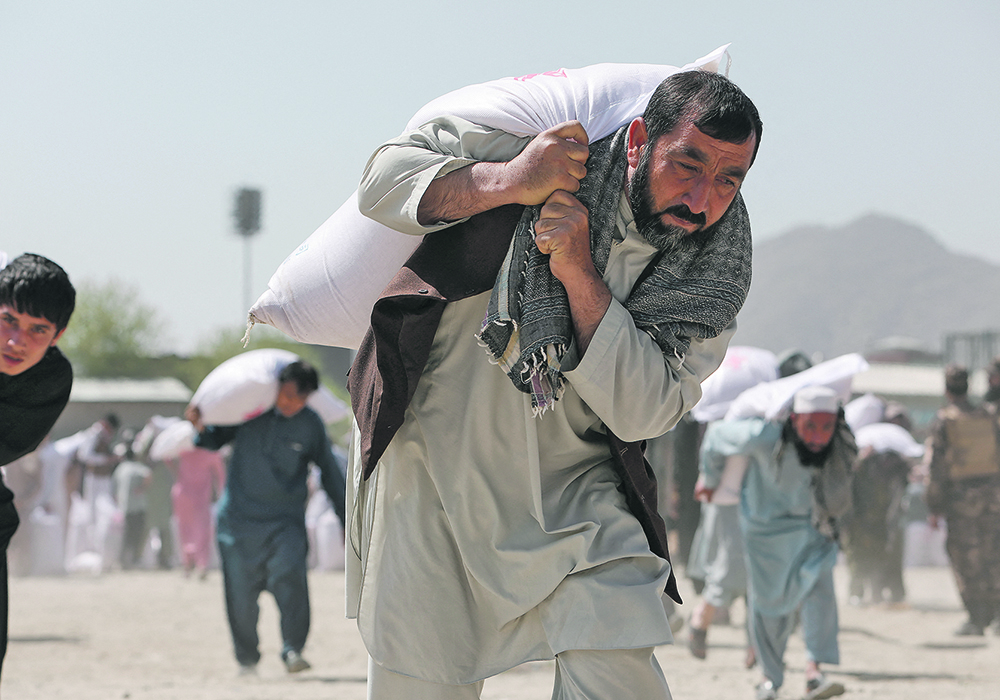Afghanistan is in the middle of a humanitarian crisis of massive proportions. And while compassionate Canadians would like to help by donating, they are unable to because Canadian organizations have been sidelined.
Canadians can only watch as millions suffer, especially women.
Gulpari is a 28-year-old woman from a small village in Nangarhar province.
“I had a very difficult childhood,” she said. “My family barely had enough to eat. My father passed away when I was young and my mother had insufficient means to support the needs of five children.”
Read Also

Higher farmland taxes for investors could solve two problems
The highest education and health care land tax would be for landlords, including investment companies, with no family ties to the land.
Due to her family’s poverty, Gulpari was forced to marry at the age of 10.
“My husband found a way to earn by selling fruits in the local market. But when the new government took over, people had less buying power. My husband lost his customers. These days, our children collect and sell scrap material and we use the money to help us survive.”
Normally, Canadian humanitarian agencies would help families like Gulpari’s, but we can’t. Canadian law prevents such organizations from delivering humanitarian aid to Afghanistan or helping partner agencies based there.
Afghanistan has been hit by a series of disasters over the past year including COVID-19 and the withdrawal of western military forces, which resulted in chaos and sanctions that cut off most foreign aid. The war in Ukraine is causing a surge in fuel, food, and commodity prices globally, and is further battering the Afghan economy. In June 2022, an earthquake killed more than 1,000 people.
All this while the worst drought in decades continues.
This confluence of disasters means that more than half of the population require urgent humanitarian assistance. The United Nations reports that about 19 million Afghans are acutely food insecure while pockets of the population are in catastrophic conditions. UNICEF estimates that one million severely malnourished children are at risk of dying.
After the fall of Kabul, many countries cut aid to the country to halt the flow of money to the Taliban, which is considered a terrorist organization. This decision has caused suffering for innocent Afghans. The situation is dire, especially for women and children who face barriers to accessing health and education.
When the UN called for donor countries to make an exception for humanitarian aid, many did, but not Canada.
Canada has made efforts to bring Afghan refugees to Canada, but the need is greater for the majority of people in Afghanistan who have no means of leaving their country. The government of Canada also committed more than $100 million to the humanitarian response in Afghanistan through UN agencies.
But the average Canadian is restricted from providing support because organizations like Presbyterian World Service & Development (PWS&D) and the Canadian Foodgrains Bank cannot legally assist Afghan people and could face prosecution if they did.
PWS&D has been working through a local partner in Afghanistan for years to meet food, health and education needs. The girls’ education project has been struggling since August 2021 due to limited foreign funding. Another program, to provide food assistance to internally displaced people, the elderly and people with disabilities, and has not been able to start because of the Canadian legal barriers.
Aid for Afghanistan is a coalition of humanitarian organizations asking the government of Canada, and all members of Parliament, to make a way for Canadian support to be provided to people in Afghanistan.
The coalition is also a place for Canadians to let their representatives know that, collectively, we urge the government to remove the barriers to humanitarian aid so that we can get on with saving lives.
Paul Hagerman is public policy director with the Canadian Foodgrains Bank and Guy Smagghe is director of Presbyterian World Service & Development.















